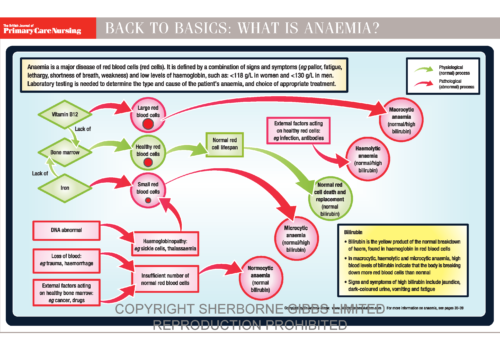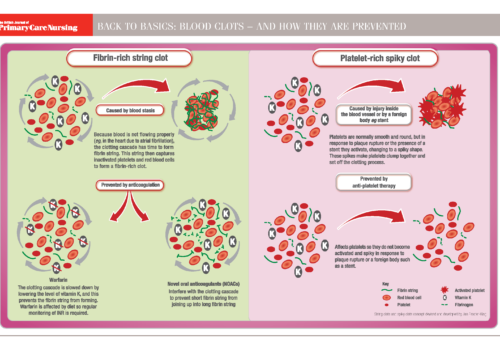Malnutrition is a cause and consequence of disease, and affects at least 3 million adults in the UK, most of whom live in the community. By helping these vulnerable patients to eat the right types of food rather than use inappropriate supplements, practice nurses can not only help prevent and treat malnutrition, but also save the NHS millions of pounds each year.
Why and when to test for anaemia
In primary care, sending blood samples to the laboratory is so routine that it is easy to take these tests for granted. But it is important to understand the purpose of each test; when it is appropriate; and how to act on the results. Here red blood cell tests and their role in identifying possible causes for anaemia are discussed.
How to eat well if your appetite is poor
www.leedscommunityhealthcare.nhs.uk
A ‘wasted decade’ for hormone replacement therapy?
Over 10 years ago, publication of Women’s Health Initiative (WHI) studies affected both public perceptions and our clinical prescribing of hormone replacement therapy (HRT). Front-page reports of higher risks of heart attacks, stroke and breast cancer led to around a million women in the UK stopping HRT, many without medical advice or clinical assessment. Since then, new evidence has emerged, much of which does not support the earlier alarming headlines.
Back to Basics: What is anaemia?
Telemonitoring for heart failure: experience of the Gloucestershire Telehealth Programme
Remote monitoring is an emerging model of care in heart failure (HF) which has been shown to be clinically beneficial. In this study, patients were recruited to a new telemonitoring programme after referral to a community HF service. Following enrolment, there was a 58% reduction in the risk of HF admissions (0.71 vs. 0.30 per year, p<0.001). During the programme patients received, on average, nine home visits, eight telephone calls and three clinic appointments per person per year.
Back to Basics: Blood clots and how they are prevented
Androgens really matter to older men
Androgens such as testosterone, male sex hormones produced by the testicles, control the development and maintenance of masculine characteristics. Reduced testosterone levels—known as male hypogonadism—may cause both physical and psychological effects. These effects may be severe enough to compromise a man’s general wellbeing and his sex life in particular. But the decision to replace testosterone is not always straightforward, and patients need careful monitoring before and after starting treatment.
Ambulatory blood pressure monitoring: from guideline into practice
NICE now recommends that 24-hour ambulatory blood pressure monitoring (ABPM) rather than repeat clinic measurements should be the gold-standard test for diagnosing high blood pressure. This article considers the practicalities of using ABPM in the clinic, including advice to pass on to patients to ensure accurate readings.
After brain attack: the new stroke guidelines
Most people now survive a first stroke, but many patients are left with significant disability. In this article, our very own BATman ‘goes through rehab’ to review recently published NICE guideline. This aims to ensure that all stroke survivors have access to effective, individualised rehabilitation, both in the hospital and during long-term follow-up in the community.
Hepatitis B: A closer look at prevention and treatment
Liver disease is the fifth largest cause of mortality in England, after heart disease, cancer, stroke and respiratory disease. Of this ‘big five’, liver disease is the only major cause of death that is rising year on year, and it affects people at a younger age. It is also becoming clear that chronic hepatitis B infection is making an increasing contribution to the rising death toll from liver disease. Recently published NICE guidelines now give practice nurses and GPs a key role in the initial assessment and onward referral of patients to specialist services, and their subsequent care.
Managing venous thromboembolism in the 21st century
Venous thromboembolism (VTE) occurs when a blood clot forms in the wrong place, and it can cause serious illness or death. Treatment of VTE is currently very labour-intensive for nurses and awkward for patients. Novel treatments are more expensive and have their own risks. But this new approach is less reliant on nurse time and more straightforward for patients, and seems likely to become the norm during the next few years.























